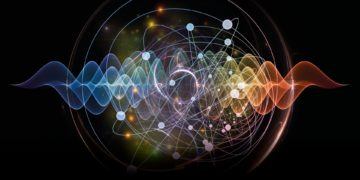by Jochen Szangolies

Hearing the words ‘quantum mechanics’ usually invokes images of the impossibly tiny and fleeting, phenomena just barely on the edge of existence, unfathomably far removed from everyday experience. Perhaps illustrated in the form of bright, jittery sparkly things jumping about in a PBS documentary, perhaps as amorphous, hovering blobs of improbability, perhaps, sometimes, by the confounding notion of a cat that’s somehow both dead and alive, yet neither of those.
This does the subject a disservice. It paints a picture of quantum mechanics as far removed from everyday experience, as something we need not worry about in everyday life, something for boffins in lab-coats to contend with in their arcane ways. Yet, we’re told of the fantastic properties of the quantum world: particles that can be in two places at once, or spontaneously erupt out of sheer nothingness; that can jump through walls and communicate with one another across great distances instantly; that seem to know when they’re being watched; that are somehow both wave and particle; and so on.
Quantum reality, then, is at once beyond our grasp and, apparently, a source of fantastical properties. This combination has always marked the arena of the mystical: something just out of reach, something fundamentally unknowable, that, nevertheless, holds the promise of opening the doors to a strange, new world—to powers far beyond those the mundane world holds in store. The quantum world is a hidden world, and, like other hidden worlds throughout history, access to it becomes a coveted resource—to the profit of those purporting to be able to grant it. Read more »
